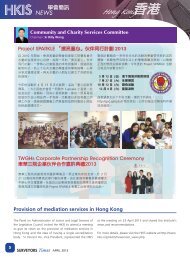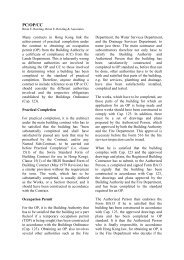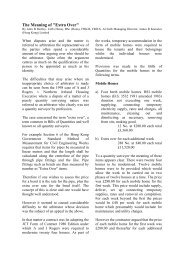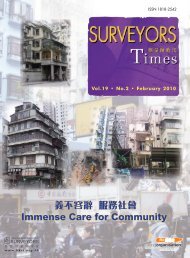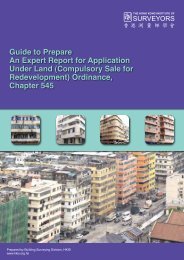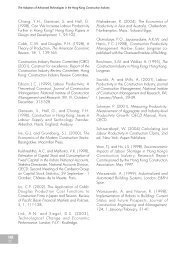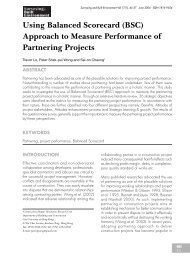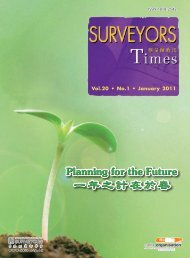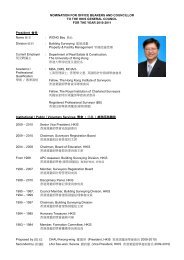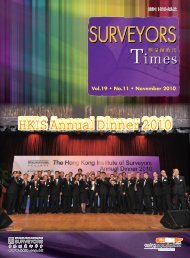Surveying & Built Environment Vol. 22 Issue 1 (December 2012)
Surveying & Built Environment Vol. 22 Issue 1 (December 2012)
Surveying & Built Environment Vol. 22 Issue 1 (December 2012)
You also want an ePaper? Increase the reach of your titles
YUMPU automatically turns print PDFs into web optimized ePapers that Google loves.
Modelling Gaseous Emissions<br />
from Energy Consumption during<br />
Building life Cycle<br />
Liyin Shen*, Vivian WY Tam** and Lei Zhang***<br />
ABSTRACT<br />
It is well known that building and construction contribute a large part of<br />
emissions to the environment, and it is estimated that worldwide, the buildings<br />
and constructions sector is the second largest global carbon dioxide (CO 2) emitter<br />
after industry, representing approximately 33% of the global total. Therefore,<br />
improving sustainability performance through mitigating emissions in construction<br />
has become a pressing issue. This paper divides any building’s life cycle into<br />
seven elements: i) manufacture of building materials; ii) transportation of building<br />
materials; iii) construction; iv) operational life; v) maintenance and repair; vi)<br />
demolition; and vii) disposal of construction waste. We define eight types of<br />
gaseous emission during a building’s life cycle: CO 2, CH 4, N 2O, SO 2, CO, NO X,<br />
NMVOC and particulates. The paper analyzes the sources of gaseous emissions<br />
and presents a model for calculating the gaseous emissions during a building life<br />
cycle with particular reference to Hong Kong. The model helps evaluate the impact<br />
of building projects on air quality, from which strategies can be devised to reduce<br />
its environmental impact during a Building Life Cycle. A preliminary review of a<br />
case study of the construction stage is also discussed to show an application of the<br />
developed model.<br />
KEY WoRdS<br />
construction, building life cycle, gaseous emission, Hong Kong<br />
* Faculty of Construction Management and Real Estate, Chongqing University, Chongqing, China.<br />
Email: shenliyin@cqu.edu.cn<br />
** Corresponding author, School of Computing, Engineering and Mathematics, University of Western<br />
Sydney, Locked Bag 1797, Penrith, NSW 2751, Australia. Tel: (61) 02-4736-0105; Fax: (61) 02-4736-<br />
0833; Email v.tam@uws.edu.au<br />
*** Department of Construction and Real Estate, School of Management, Harbin Institute of<br />
Technology, Harbin 150001, China. Email: zhang@gu.edu.cn<br />
SBE<br />
61



